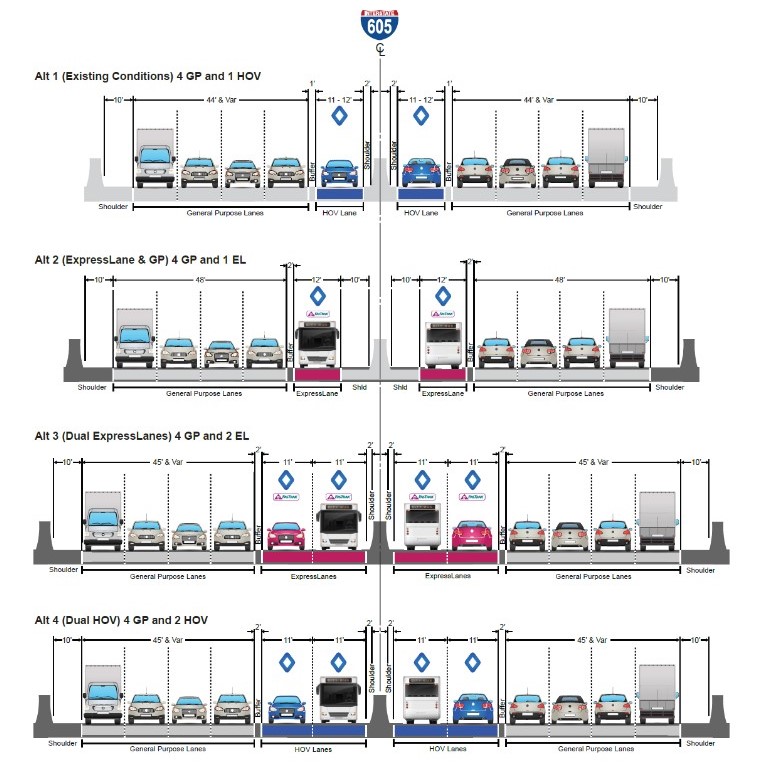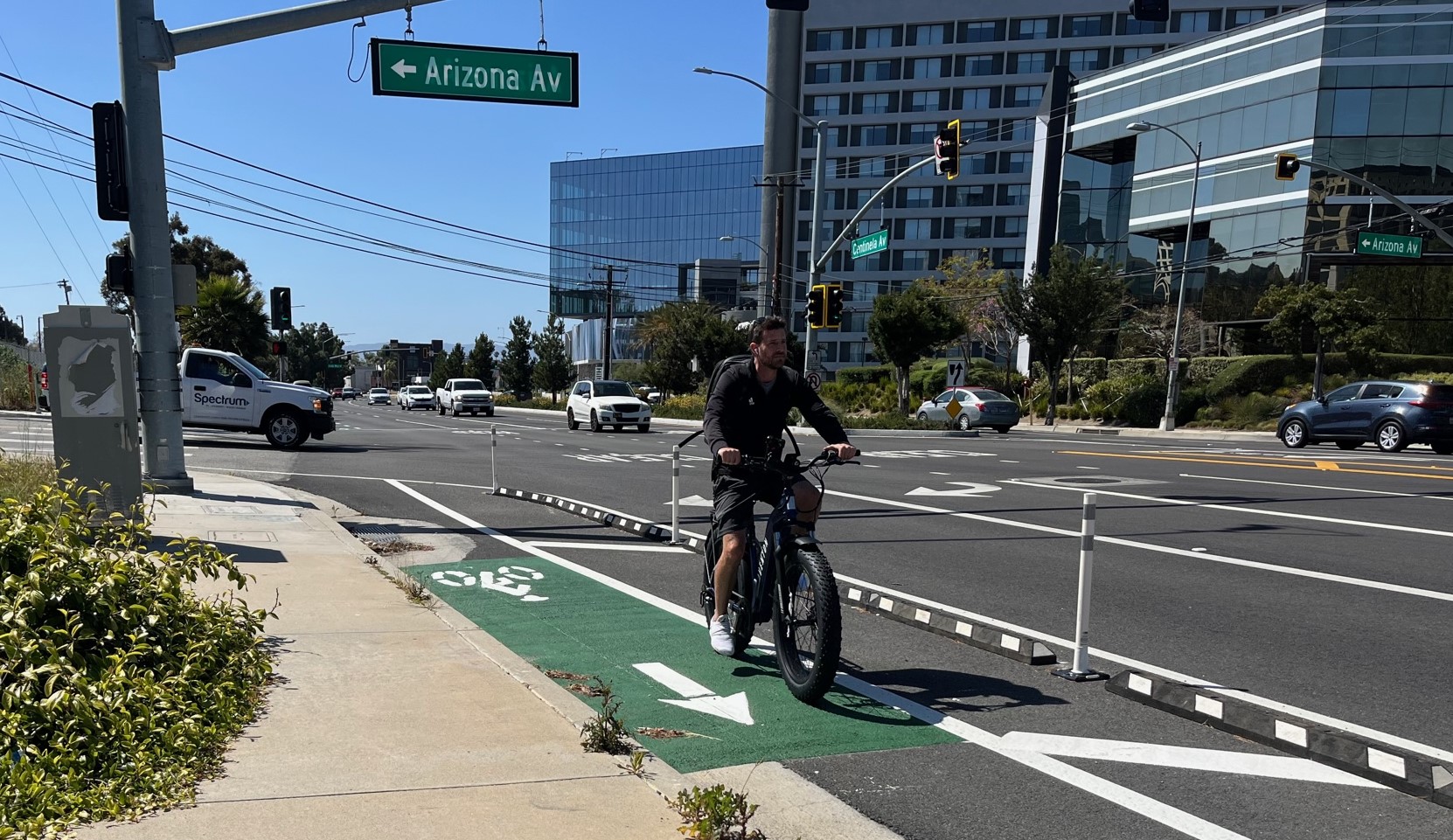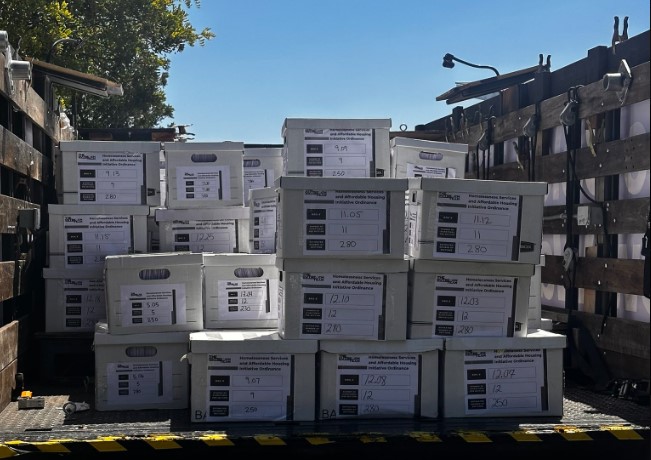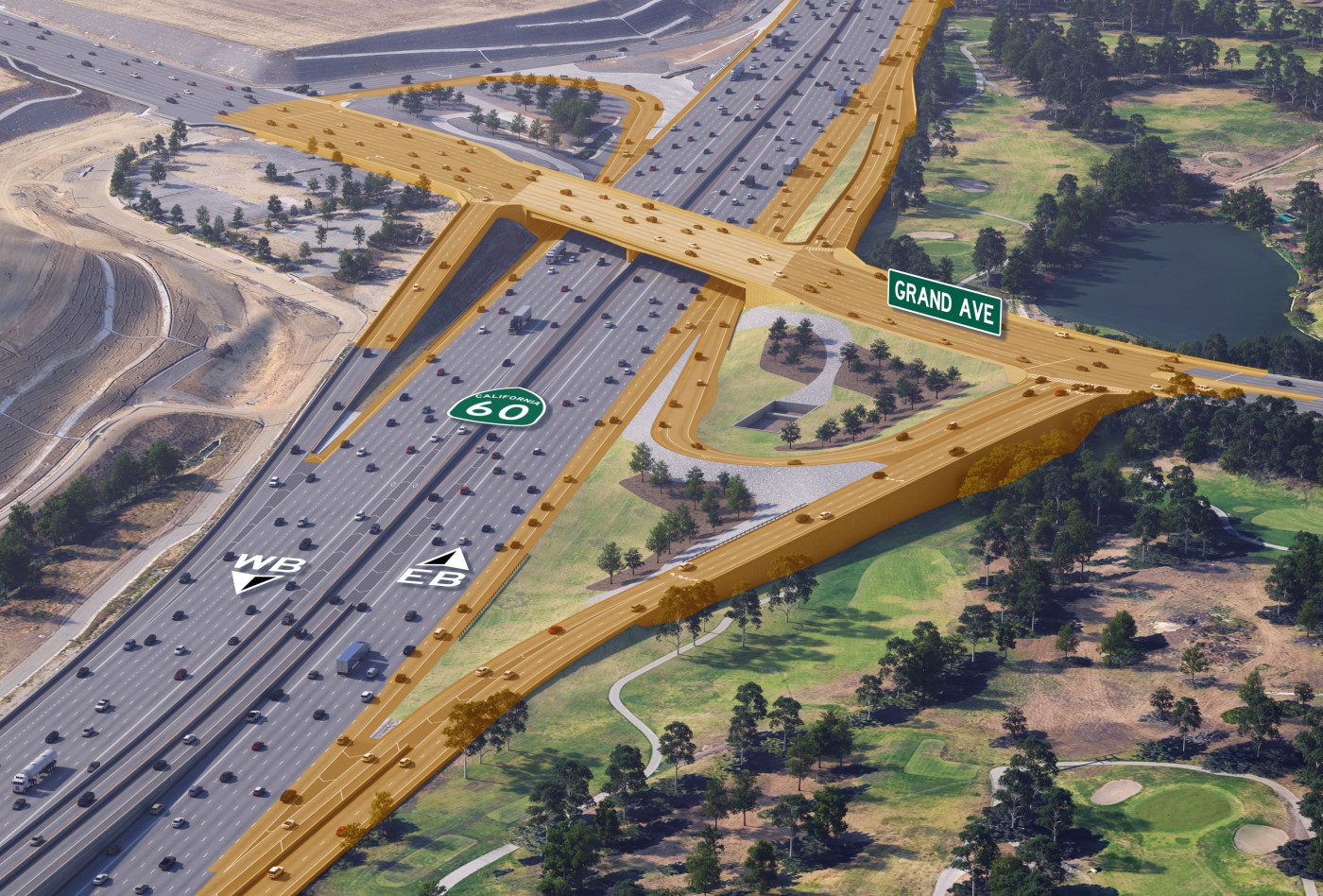Overview of Metro’s Proposed Fiscal Year 22-23 Budget
9:48 AM PDT on May 10, 2022

Metro’s glossy FY23 Budget Summary
This month, the Metro board is expected to approve the agency's budget for Fiscal Year 2022-23 which starts July 1. Staff have a proposed an annual budget totaling $8.8 billion, up nine percent from FY21-22's $8.04 billion total. The board vote on the budget is a high-stakes affair, with on-the-fly changes being very rare, and boardmembers generally approving the parameters recommended by staff.
Metro is currently asking for public feedback on its proposed budget. Concerned parties can use Metro's budget input webpage, email budgetcomments[at]metro.net, or give oral public comment at the Metro FY23 Budget Public Hearing (concurrent with the Metro board Finance and Audit Committee meeting) on May 18, starting at 1:30 p.m. Find meeting information at Metro event page.
Readers seeking budget details can look to Metro's glossy 11-page FY23 Budget Summary and the 87-page FY23 Proposed Budget, which includes spreadsheets for all of Metro's programs.
This post features an overview of the proposed FY23 budget, and a recap of earlier SBLA criticism of Metro's plan to increase freeway expansion capital spending, while decreasing transit expansion capital spending. Streetsblog intends to post further budget analysis this week.
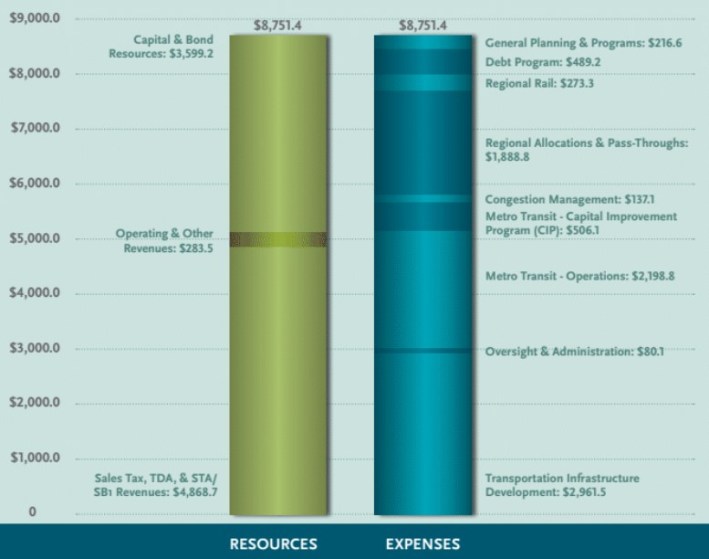
Overall Budget Revenue
As in past years, Metro's primary funding source is sales tax revenue - from four countywide measures (Propositions A and C and Measures R and M). Note that these tax revenues are projected to be up nearly twenty percent from last year. For FY23, Metro sales taxes will account for $4.13 billion, roughly half of the overall budget.
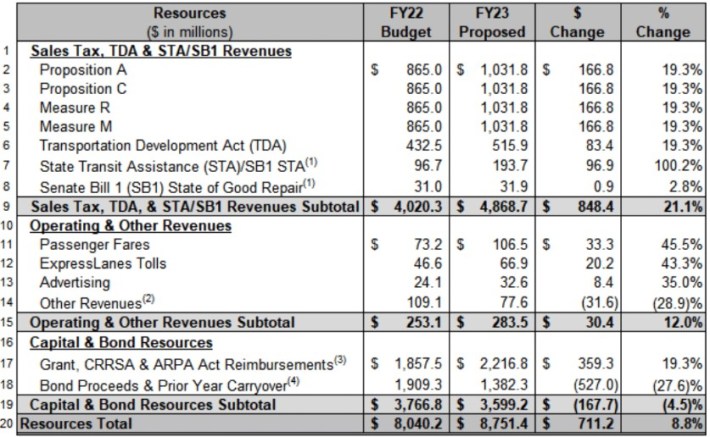
Transit fares continue to play an arguably negligible part in Metro revenues; for FY23, Metro expects just $106 million in fare revenue, which is 1.2 percent of the overall budgeted revenue.
Another big source of funding for FY23 is federal COVID stimulus monies, primarily Biden's 2021 American Rescue Plan Act (ARPA). Metro's budget shows a one-time infusion of $1.46 billion in ARPA monies (about a fifth of the over FY23 budget), though some of this federal funding passes through to other Southern California transit operators, so $1.1 billion in APRA money stays at Metro.
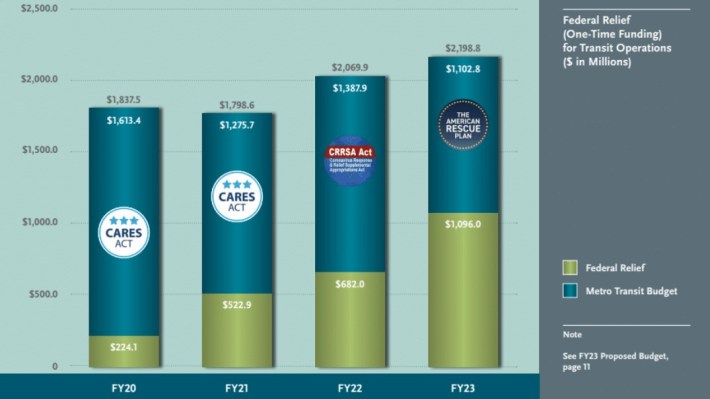

There's no doubt that the various federal COVID stimulus monies have helped Metro's bottom line during trying times, but it's not all that clear what sort of benefits Metro riders will see from this money.
In March 2021, Metro announced that ARPA was funding $277 million in rail construction (hinting then at project acceleration, which did not happen) and that ARPA dollars would also go toward restoring Metro service (slashed in 2020) to pre-pandemic levels by September 2021. But ARPA funding was not included in the FY22 budget approved in mid-2021. To the detriment of riders (and against Metro board January 2021 and February 2021 orders), 2020's service cuts persist through today. Assuming that Metro resolves a somewhat self-inflicted operator shortage, service could be restored to pre-pandemic levels this June (next month) - or Metro operations might just push back the service restoration deadline, for the third time.
The FY23 budget applies Metro's billion-plus ARPA dollars to "continued provision of essential transit services" (plus funding Metro's student fareless pilot). The ARPA funds are not being used to expand transit service by a billion dollars. ARPA is largely paying for transit service costs so Metro can move other operations-eligible money elsewhere in the budget.
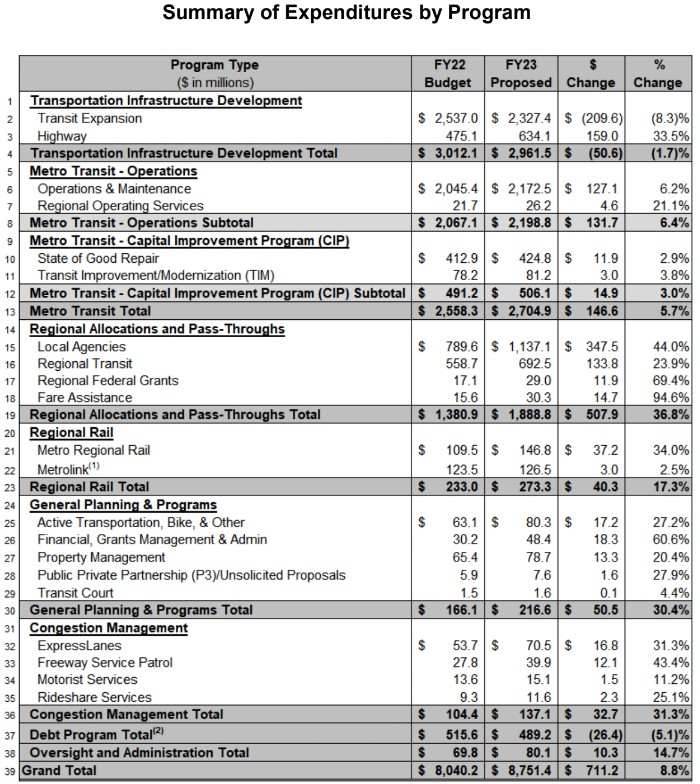
Budget Expenditures - FY23 Transit Operations
Back in the FY20 budget (the last pre-COVID), Metro approved 8.23 million transit revenue service hours (RSH) which is ~686,000 RSH/month. Full monthly service levels were approved in the FY22 budget, which had 8.28 million RSH overall - including ~700,000 RSH/month for October through June. As noted above, that full service restoration planned for October has not happened yet.
The proposed FY23 budget includes a service increase to an overall total of 8.7 million RSH - about five percent higher than pre-pandemic levels.
Aside from past performance suggesting that Metro might not achieve the service restoration nor the modest increase, the planned increase is mainly on rail. Compared to last year's (approved but unmet) service levels, rail RSH would increase 19.3 percent (with new Crenshaw/LAX and Regional Connector rail lines opening), with overall bus RSH set to increase just 2.8 percent (above inadequate pre-pandemic levels).
There are some worthwhile bus speed improvement expenditures:
- $11.1 million for bus-only lanes
- $3.3 million for new automated bus-only lane parking enforcement
- $7 million for TAP card validators to expand all-door boarding
- $6 million for transit signal prioritization
This proposed $27 million investment will improve bus riders' lives, but, as transit advocates have pointed out, three years into a planned five-year one-billion-dollar program, the overall NextGen investments are falling seriously short. Metro had planned to invest a couple hundred million each year for five years, but has only budgeted about $30-40 million total in the first three years.
This is the phasing improvements approved for @metrolosangeles NextGen bus network redesign. Over $1 billion in bus capital investments over 5 years. So far we have: FY21 = $7 Million, FY22 $8 Million, FY23 $18.5 Million. All projected expenditures, no actuals yet. pic.twitter.com/0RmHb251iv
— Investing in Place (@InvestinPlace) April 20, 2022
Budget Expenditures - FY23 Construction Increasing for Freeways, Decreasing for Transit
As Streetsblog reported in March during the FY23 budget development process, Metro had proposed increasing spending on freeway expansion while cutting transit expansion.
The current budget proposal is pretty much along the lines already reported, but slightly worse.
In March, Metro planned to spend $617.2 million on FY23 highway expansion, a 30 percent increase from the prior year. The current budget ups that highway expansion budget to $634 million - a 33.5 percent increase from FY22. Inside that highway budget, Metro has increased anticipated highway/roadway widening expenditures, while trimming a few highway budget items that would benefit transit riders, including cutting earlier proposed funding for NextGen bus lanes (which had $12.2 million in March, down to $11.1 million now) and High Desert Multipurpose Corridor (high-speed rail) studies.
Back in March, Metro had planned to decrease transit expansion spending by 9 percent - to $2.27 billion. This improved slightly with the expenditure increased to $2.30 billion, an 8.3 percent decrease from FY22.
Additional SBLA Metro budget coverage coming soon.
Stay in touch
Sign up for our free newsletter
More from Streetsblog Los Angeles
Eyes on the Street: Recent Centinela Bike Lanes in Culver City
The new partially-protected Centinela facility is a welcome safety upgrade for a stretch that long lacked any type of bikeway, but the area remains not all that bike-friendly
This Week In Livable Streets
Bike Month continues, Metro 91 Freeway widening, Destination Crenshaw, Culver City Bus, Santa Monica MANGo, Metro bike lockers, Metro Sepulveda Transit, and more
